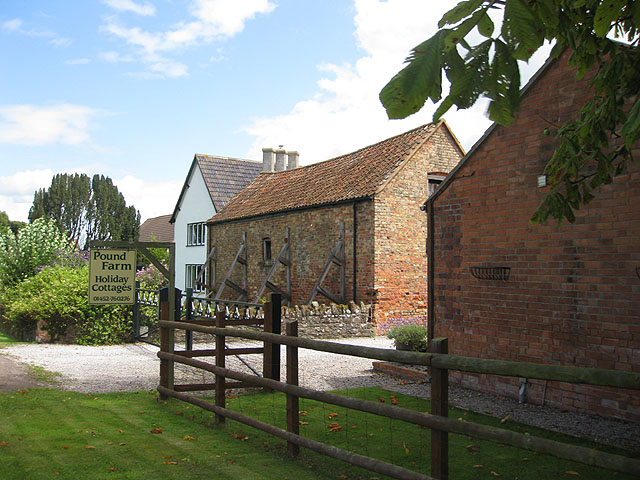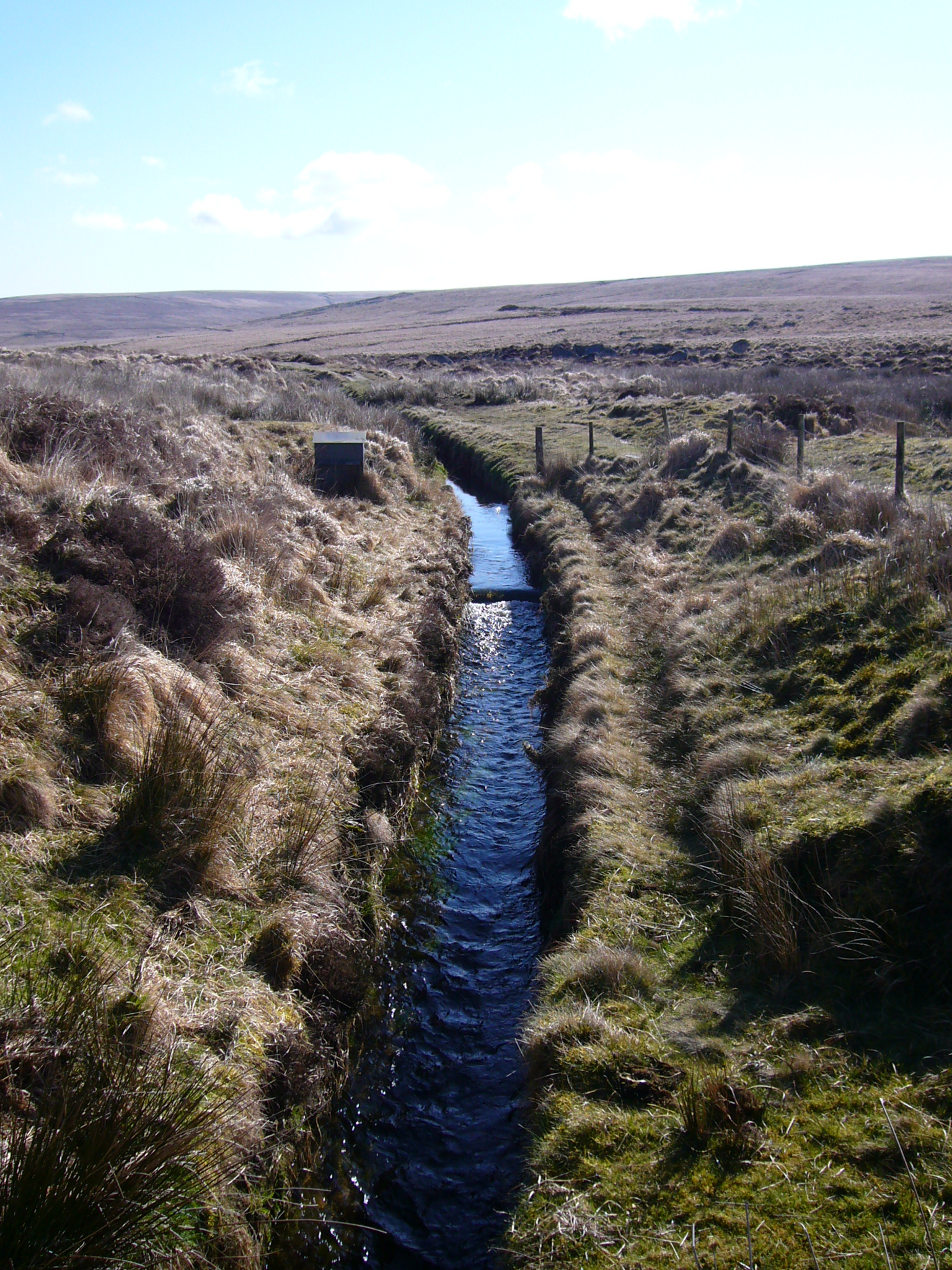|
Bodilly
Bodilly is a hamlet in south Cornwall, England, United Kingdom, that lends its name to neighbouring farms and settlements. It is situated in the civil parish of Wendron approximately northwest of Wendron. The hamlet itself is at , but the name Bodilly generally covers the area northwest of Wendron. History The hamlet dates at least to the 14th century. It first appears in print around 1302, as "Bodelymur juxta Relegh", meaning "Bodelymur adjoining Releath". In terms of toponymy, the name quickly shortened to Bodely and variations (Bodili, Bodilli, Bodilly, Bodyly) in the mid- to late 14th century. The hamlet appears as Bodillye in 1678, but Bodilly has been used since 1844. In Medieval times, there was a chapel of St Henry the Hermit (died 1120, feast day on 16 January) in Bodilly. The site was located to the west of the hamlet, down a footpath that now crosses the valley to the west. Not much remains of the original chapel. It would have originally been a wooden structure a ... [...More Info...] [...Related Items...] OR: [Wikipedia] [Google] [Baidu] |
Wendron
Wendron (; historically St. Wendron) is a village and civil parish in Cornwall, England, United Kingdom. It is approximately to the north of Helston and to the west of Penryn. The parish population at the 2011 census was 2,743. The electoral ward of Wendron had a 2011 population of 4,936. History The parish of Wendron was part of the Hundred of Kerrier and was originally bounded by the parishes of Illogan, Gwennap, Stithians, Constantine, Mawgan-in-Meneage, Gunwalloe, Sithney and Crowan. Until the mid 19th-century the parish of Wendron included the town of Helston and what are now the parishes of Carnmenellis and Pencoys. The parish of Carnmenellis was created in 1846; Helston in 1848; and Pencoys in 1881. Before 1284 Edmund, Earl of Cornwall, gave the church of Wendron, with its chapels, to Rewley Abbey near Oxford. Before this it had belonged to the Earl's, Manor of Helston, which included the whole parish. The church is cruciform but was enlarged in the 15th-cen ... [...More Info...] [...Related Items...] OR: [Wikipedia] [Google] [Baidu] |
Holiday Cottage
A holiday cottage, holiday home, vacation home, or vacation property is accommodation used for holiday vacations, corporate travel, and temporary housing often for less than 30 days. Such properties are typically small homes, such as cottages, that travelers can rent and enjoy as if it were their own home for the duration of their stay. The properties may be owned by those using them for a vacation, in which case the term second home applies; or may be rented out to holidaymakers through an agency. Terminology varies among countries. In the United Kingdom this type of property is usually termed a ''holiday home'' or ''holiday cottage''; in Australia, a ''holiday house/home'', or ''weekender''; in New Zealand, a ''bach'' or ''crib''. Characteristics and advantages Today's global short-term vacation property rental market is estimated to be worth $100 billion. The holiday cottage market in both Canada and the UK is highly competitive – and big business. Numbers United ... [...More Info...] [...Related Items...] OR: [Wikipedia] [Google] [Baidu] |
Sign Of The Cross
Making the sign of the cross (), also known as blessing oneself or crossing oneself, is both a prayer and a ritual blessing made by members of some branches of Christianity. It is a very significant prayer because Christians are acknowledging their belief in the triune God, or the Holy Trinity: God the Father, God the Son and God the Holy Spirit. There are three variants of the sign of the cross, including a large sign of the cross made across the body, a small sign of the cross traced on the forehead or objects, as well as a lesser sign of the cross made over the forehead, lips and heart. The use of the sign of the cross traces back to early Christianity, with the third-century treatise ''Apostolic Tradition'' directing that it be used during the Minor exorcism in Christianity, minor exorcism of baptism, during ablution in Christianity, ablutions before praying at fixed prayer times, and in times of temptation. The ''large sign of the cross'' is made by the tracing of an Lati ... [...More Info...] [...Related Items...] OR: [Wikipedia] [Google] [Baidu] |
Oral History
Oral history is the collection and study of historical information from people, families, important events, or everyday life using audiotapes, videotapes, or transcriptions of planned interviews. These interviews are conducted with people who participated in or observed past events and whose memories and perceptions of these are to be preserved as an aural record for future generations. Oral history strives to obtain information from different perspectives and most of these cannot be found in written sources. ''Oral history'' also refers to information gathered in this manner and to a written work (published or unpublished) based on such data, often preserved in archives and large libraries.oral history. (n.d.) The Columbia Electronic Encyclopedia®. (2013). Retrieved 12 March 2018 from https://encyclopedia2.thefreedictionary.com/oral+history Knowledge presented by oral history is unique in that it shares the tacit perspective, thoughts, opinions and understanding of the interview ... [...More Info...] [...Related Items...] OR: [Wikipedia] [Google] [Baidu] |
Cutting
Cutting is the separation or opening of a physical object, into two or more portions, through the application of an acutely directed force. Implements commonly used for wikt:cut, cutting are the knife and saw, or in medicine and science the scalpel and microtome. However, any sufficiently sharp object is capable of cutting if it has a hardness sufficiently larger than the object being cut, and if it is applied with sufficient force. Even liquids can be used to cut things when applied with sufficient force (see water jet cutter). Cutting is a compression (physical), compressive and shearing (physics), shearing phenomenon, and occurs only when the total stress (physics), stress generated by the cutting implement exceeds the ultimate Strength of materials, strength of the material of the object being cut. The simplest applicable equation is: :\text = or \tau=\frac The stress generated by a cutting implement is directly proportional to the force with which it is applied, and ... [...More Info...] [...Related Items...] OR: [Wikipedia] [Google] [Baidu] |
Christian Cross
The Christian cross, seen as representing the crucifixion of Jesus, is a religious symbol, symbol of Christianity. It is related to the crucifix, a cross that includes a ''corpus'' (a representation of Jesus' body, usually three-dimensional) and to the more general family of cross, cross symbols. The term '':wikt:cross, cross'' is now detached from its original specifically Christian meaning, in Early Modern English, modern English and many other Western languages. The basic forms of the cross are the Latin cross with unequal arms and the Greek cross with equal arms; there are numerous Christian cross variants, variants, partly with confessional significance—such as the tau cross, the Patriarchal cross, double-barred cross, Papal cross, triple-barred cross, and Jerusalem cross, cross-and-crosslets—and many heraldic cross, heraldic variants, such as the cross potent, cross pattée, and cross moline, cross fleury. Pre-Christian symbolism A version of the cross symbol was use ... [...More Info...] [...Related Items...] OR: [Wikipedia] [Google] [Baidu] |
Bas-relief
Relief is a sculptural method in which the sculpted pieces remain attached to a solid background of the same material. The term ''relief'' is from the Latin verb , to raise (). To create a sculpture in relief is to give the impression that the sculpted material has been raised above the background plane. When a relief is carved into a flat surface of stone (relief sculpture) or wood ( relief carving), the field is actually lowered, leaving the unsculpted areas seeming higher. The approach requires chiselling away of the background, which can be time-intensive. On the other hand, a relief saves forming the rear of a subject, and is less fragile and more securely fixed than a sculpture in the round, especially one of a standing figure where the ankles are a potential weak point, particularly in stone. In other materials such as metal, clay, plaster stucco, ceramics or papier-mâché the form can be simply added to or raised up from the background. Monumental bronze reliefs are ... [...More Info...] [...Related Items...] OR: [Wikipedia] [Google] [Baidu] |
Waterwheel
A water wheel is a machine for converting the kinetic energy of flowing or falling water into useful forms of power, often in a watermill. A water wheel consists of a large wheel (usually constructed from wood or metal), with numerous blades or buckets attached to the outer rim forming the drive mechanism. Water wheels were still in commercial use well into the 20th century, although they are no longer in common use today. Water wheels are used for milling flour in gristmills, grinding wood into pulp for papermaking, hammering wrought iron, machining, ore crushing and pounding fibre for use in the manufacture of cloth. Some water wheels are fed by water from a mill pond, which is formed when a flowing stream is dammed. A channel for the water flowing to or from a water wheel is called a mill race. The race bringing water from the mill pond to the water wheel is a headrace; the one carrying water after it has left the wheel is commonly referred to as a tailrace. Waterwheel ... [...More Info...] [...Related Items...] OR: [Wikipedia] [Google] [Baidu] |
Leat
A leat (; also lete or leet, or millstream) is the name, common in the south and west of England and in Wales, for an artificial watercourse or aqueduct dug into the ground, especially one supplying water to a watermill or its mill pond. Other common uses for leats include delivery of water for hydraulic mining and mineral concentration, for irrigation, to serve a dye works or other industrial plant, and provision of drinking water to a farm or household or as a catchment cut-off to improve the yield of a reservoir. According to the ''Oxford English Dictionary'', ''leat'' is cognate with ''let'' in the sense of "allow to pass through". Other names for the same thing include ''fleam'' (probably a leat supplying water to a mill that did not have a millpool). In parts of northern England, for example around Sheffield, the equivalent word is ''goit''. In southern England, a leat used to supply water for water-meadow irrigation is often called a ''carrier'', ''top carrier'', or ... [...More Info...] [...Related Items...] OR: [Wikipedia] [Google] [Baidu] |
Gristmill
A gristmill (also: grist mill, corn mill, flour mill, feed mill or feedmill) grinds cereal grain into flour and Wheat middlings, middlings. The term can refer to either the grinding mechanism or the building that holds it. Grist is grain that has been separated from its chaff in preparation for mill (grinding), grinding. History Early history The Greek geographer Strabo reported in his ''Geography'' that a water-powered grain-mill existed near the palace of king Mithradates VI Eupator at Cabira, Asia Minor, before 71 BC. The early mills had horizontal paddle wheels, an arrangement which later became known as the "Norse wheel", as many were found in Scandinavia. The paddle wheel was attached to a shaft which was, in turn, attached to the centre of the millstone called the "runner stone". The turning force produced by the water on the paddles was transferred directly to the runner stone, causing it to grind against a stationary "Mill machinery#Watermill machinery, bed", a ... [...More Info...] [...Related Items...] OR: [Wikipedia] [Google] [Baidu] |








